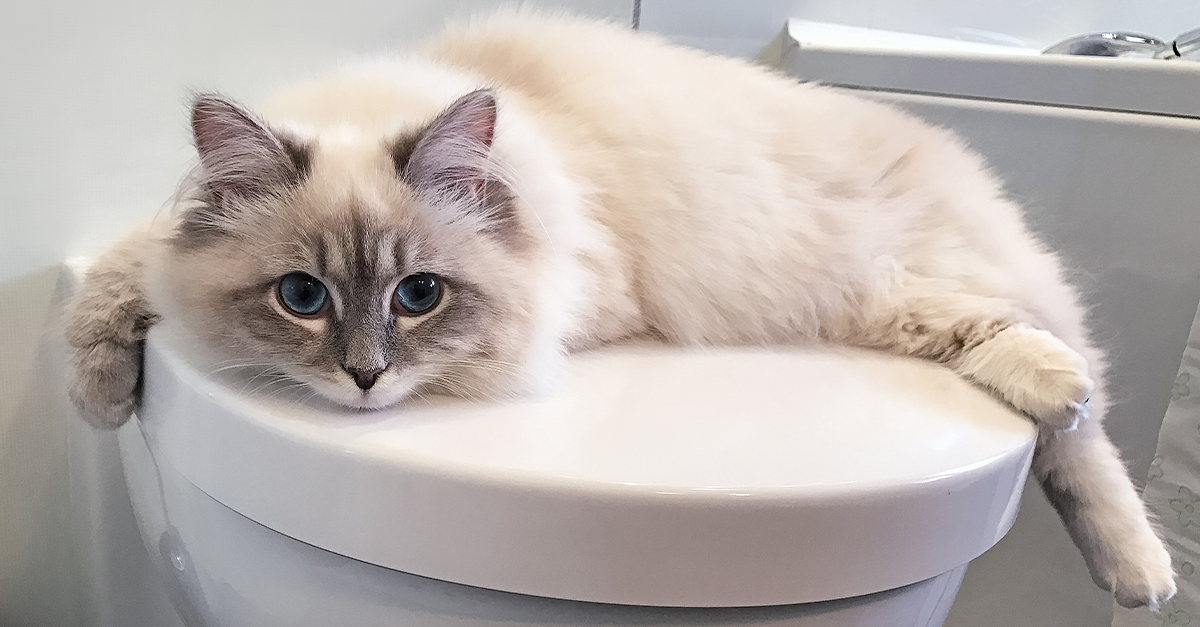The article which follows pertaining to Don’t flush cat feces down the toilet is exceptionally remarkable. Don't miss it.

Introduction
As cat owners, it's important to bear in mind how we get rid of our feline close friends' waste. While it might seem convenient to flush feline poop down the bathroom, this method can have harmful repercussions for both the atmosphere and human health and wellness.
Environmental Impact
Flushing cat poop introduces damaging microorganisms and parasites into the supply of water, presenting a significant risk to marine ecological communities. These pollutants can negatively impact marine life and concession water top quality.
Health and wellness Risks
In addition to environmental concerns, flushing pet cat waste can additionally present health and wellness dangers to people. Cat feces may contain Toxoplasma gondii, a parasite that can create toxoplasmosis-- a possibly severe disease, specifically for expectant ladies and individuals with weakened immune systems.
Alternatives to Flushing
The good news is, there are more secure and a lot more accountable means to take care of pet cat poop. Think about the following choices:
1. Scoop and Dispose in Trash
One of the most typical method of disposing of pet cat poop is to scoop it right into a naturally degradable bag and toss it in the garbage. Be sure to make use of a specialized litter inside story and get rid of the waste promptly.
2. Usage Biodegradable Litter
Select biodegradable pet cat litter made from materials such as corn or wheat. These clutters are eco-friendly and can be securely thrown away in the trash.
3. Hide in the Yard
If you have a yard, take into consideration burying pet cat waste in a designated area far from vegetable yards and water sources. Make certain to dig deep enough to stop contamination of groundwater.
4. Install a Pet Waste Disposal System
Buy an animal garbage disposal system specifically made for cat waste. These systems make use of enzymes to break down the waste, decreasing smell and environmental effect.
Verdict
Accountable pet dog ownership expands beyond supplying food and shelter-- it likewise entails appropriate waste monitoring. By avoiding flushing pet cat poop down the bathroom and opting for alternate disposal approaches, we can reduce our ecological impact and safeguard human health and wellness.
Why Can’t I Flush Cat Poop?
It Spreads a Parasite
Cats are frequently infected with a parasite called toxoplasma gondii. The parasite causes an infection called toxoplasmosis. It is usually harmless to cats. The parasite only uses cat poop as a host for its eggs. Otherwise, the cat’s immune system usually keeps the infection at low enough levels to maintain its own health. But it does not stop the develop of eggs. These eggs are tiny and surprisingly tough. They may survive for a year before they begin to grow. But that’s the problem.
Our wastewater system is not designed to deal with toxoplasmosis eggs. Instead, most eggs will flush from your toilet into sewers and wastewater management plants. After the sewage is treated for many other harmful things in it, it is typically released into local rivers, lakes, or oceans. Here, the toxoplasmosis eggs can find new hosts, including starfish, crabs, otters, and many other wildlife. For many, this is a significant risk to their health. Toxoplasmosis can also end up infecting water sources that are important for agriculture, which means our deer, pigs, and sheep can get infected too.
Is There Risk to Humans?
There can be a risk to human life from flushing cat poop down the toilet. If you do so, the parasites from your cat’s poop can end up in shellfish, game animals, or livestock. If this meat is then served raw or undercooked, the people who eat it can get sick.
In fact, according to the CDC, 40 million people in the United States are infected with toxoplasma gondii. They get it from exposure to infected seafood, or from some kind of cat poop contamination, like drinking from a stream that is contaminated or touching anything that has come into contact with cat poop. That includes just cleaning a cat litter box.
Most people who get infected with these parasites will not develop any symptoms. However, for pregnant women or for those with compromised immune systems, the parasite can cause severe health problems.
How to Handle Cat Poop
The best way to handle cat poop is actually to clean the box more often. The eggs that the parasite sheds will not become active until one to five days after the cat poops. That means that if you clean daily, you’re much less likely to come into direct contact with infectious eggs.
That said, always dispose of cat poop in the garbage and not down the toilet. Wash your hands before and after you clean the litter box, and bring the bag of poop right outside to your garbage bins.
https://trenchlesssolutionsusa.com/why-cant-i-flush-cat-poop/

I came across that blog entry on How to Dispose of Cat Poop and Litter Without Plastic Bags when doing a search on the web. Those who appreciated our page plz do not forget to share it. Thanks for going through it.
Contact Us